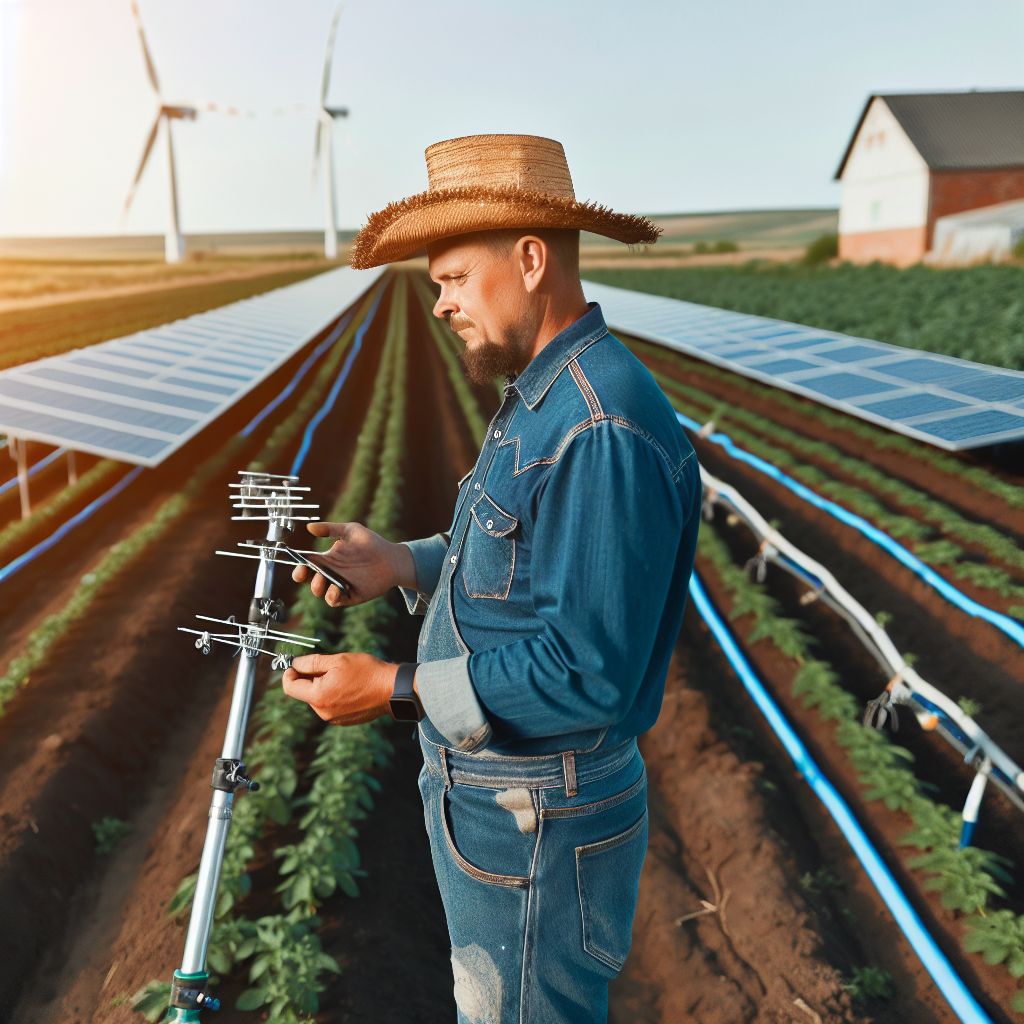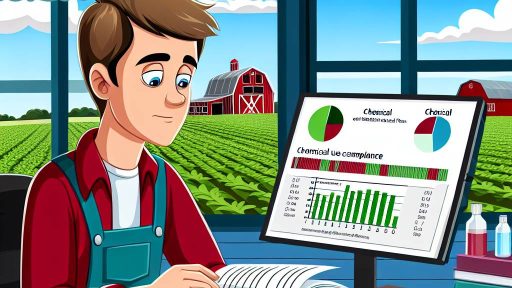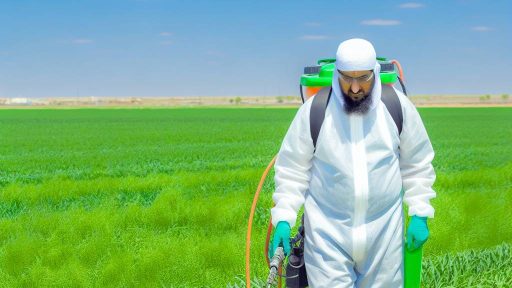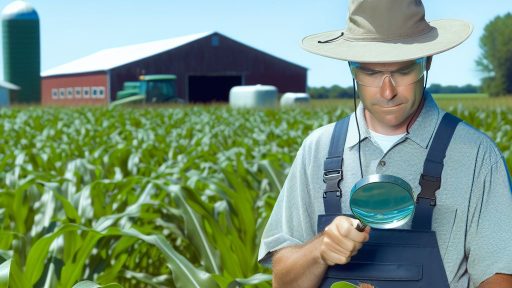Overview of Climate Change and Its Impact on Agriculture
Defining Climate Change
Climate change refers to long-term shifts in temperatures and weather patterns.
This phenomenon results from both natural processes and human activities.
Factors such as greenhouse gas emissions play a significant role.
Consequently, rising temperatures and altered precipitation patterns occur.
Effects on Crop Production
Climate change impacts agricultural productivity in numerous ways.
For instance, higher temperatures can disrupt crop growth cycles.
Additionally, changing rainfall patterns affect soil moisture and irrigation.
Farmers are experiencing reduced yields in key crops, such as wheat and corn.
This decline threatens food security for populations worldwide.
Pest and Disease Trends
Warmer temperatures create favorable conditions for pests and diseases.
This increase further strains agricultural resources and crop resilience.
Farmers may need to adopt new pest control strategies as conditions change.
Some regions face the risk of invasive species damaging local crops.
Impact on Livestock
Livestock farming faces challenges due to climate change as well.
Higher heat levels can lead to heat stress in animals.
Transform Your Agribusiness
Unlock your farm's potential with expert advice tailored to your needs. Get actionable steps that drive real results.
Get StartedThis stress affects animal health, reproduction, and productivity.
Moreover, changes in feed quality and availability further complicate matters.
Adaptation Strategies in Agriculture
Farmers are adopting various strategies to cope with these changes.
For example, crop rotation helps maintain soil health and yields.
Integrating technology can enhance efficiency and productivity.
Furthermore, developing drought-resistant crop varieties holds promise.
Policy and Support Measures
Governments play a crucial role in supporting agriculture amid climate challenges.
Policies aimed at sustainable practices encourage farmer resilience.
Financial assistance programs can help farmers manage risks effectively.
Additionally, research funding promotes innovative solutions to agricultural problems.
Key Climate Change Policies Affecting the Agriculture Sector
Introduction to Climate Change Policies
Climate change policies significantly influence agricultural practices.
Governments worldwide recognize the impact of climate change.
Consequently, they implement regulations to mitigate adverse effects.
Carbon Pricing Mechanisms
Carbon pricing mechanisms aim to reduce greenhouse gas emissions.
These include carbon taxes and cap-and-trade programs.
Farmers of large-scale operations face increased costs due to carbon taxes.
In contrast, cap-and-trade programs incentivize emissions reductions.
Sustainable Agriculture Initiatives
Sustainable agriculture initiatives promote environmentally friendly practices.
Governments offer incentives for farmers adopting sustainable methods.
These methods include crop rotation, agroforestry, and organic farming.
Such practices improve soil health and reduce carbon footprints.
As a result, they contribute to enhanced productivity over time.
Water Management Policies
Water management policies address the critical issue of water scarcity.
They encourage efficient irrigation practices among farmers.
Showcase Your Farming Business
Publish your professional farming services profile on our blog for a one-time fee of $200 and reach a dedicated audience of farmers and agribusiness owners.
Publish Your ProfileThese policies often include regulations on water usage rights.
Farmers adopting water-efficient technologies receive subsidy support.
Additionally, policies promote conservation of local water sources.
Research and Development Funding
Investment in research and development is vital for adaptation.
Governments fund projects aimed at developing climate-resilient crops.
These projects focus on varieties that withstand extreme weather events.
Furthermore, funding supports innovative farming techniques and tools.
Such advancements enhance overall agricultural resilience to climate change.
International Trade Agreements
International trade agreements have significant implications for agriculture.
They affect tariffs and access to global markets for farmers.
Trade policies increasingly include environmental standards and sustainability clauses.
Farmers must adapt their practices to comply with these regulations.
This compliance ensures competitiveness in international markets.
The Role of Renewable Energy in Sustainable Farming Practices
Understanding Renewable Energy Sources
Renewable energy sources include solar, wind, and biomass.
These sources provide sustainable alternatives to fossil fuels.
Farmers increasingly adopt renewable energy to enhance productivity.
Solar panels power irrigation systems and farm operations.
Benefits of Renewable Energy in Agriculture
Using renewable energy reduces greenhouse gas emissions.
This approach minimizes the carbon footprint of farming.
Additionally, it lowers energy costs for farmers.
Consequently, this leads to increased profit margins and sustainability.
Innovative Technologies in Renewable Energy
Technological advancements make renewable energy more accessible.
Examples include solar-powered pumps and wind turbines.
These technologies allow farmers to harness natural resources effectively.
Furthermore, they contribute to energy independence and resilience.
Challenges in Implementing Renewable Energy
Farmers face installation costs for renewable energy systems.
In some cases, local regulations hinder development.
Available incentives may not cover initial investments fully.
As a result, farmers may require additional support to transition.
The Future of Renewable Energy in Agriculture
Many predict significant growth in renewable energy usage in farming.
As technology advances, costs will likely decrease.
Moreover, policies promoting sustainability may drive adoption.
This shift holds promise for enhancing food security and environmental health.
Learn More: Technological Innovations In Conservation Programs For Farming
Innovations in Agricultural Technology Aligned with Climate Policies
Precision Agriculture
Precision agriculture leverages technology for better crop management.
This approach uses data analytics to enhance yields and reduce waste.
Farmers can monitor soil conditions and crop health using sensors.
As a result, they apply resources more efficiently and sustainably.
Genetic Engineering
Genetic engineering facilitates the development of climate-resilient crops.
These crops can withstand extreme weather conditions effectively.
Showcase Your Farming Business
Publish your professional farming services profile on our blog for a one-time fee of $200 and reach a dedicated audience of farmers and agribusiness owners.
Publish Your ProfileResearchers create varieties that use water efficiently and resist pests.
Consequently, farmers experience higher productivity and lower losses.
Integrated Pest Management
Integrated pest management combines biological, cultural, and mechanical practices.
This strategy aims to minimize chemical pesticide use significantly.
Farmers can maintain ecological balance while managing pests effectively.
Thus, they enhance crop resilience against pests and diseases.
Renewable Energy Solutions
Renewable energy solutions power modern agricultural operations sustainably.
Solar panels and wind turbines provide clean energy for farms.
These technologies reduce reliance on fossil fuels and lower emissions.
As a bonus, they cut down on operational costs over time.
Data-Driven Decision Making
Data-driven decision-making tools revolutionize farm management.
Farmers rely on analytics to predict weather patterns and market trends.
This knowledge helps in planning planting and harvesting schedules.
Moreover, it reduces risks associated with climate variability.
Smart Irrigation Systems
Smart irrigation systems optimize water usage effectively.
Sensors monitor soil moisture levels and weather data continuously.
These systems deliver water precisely when and where it’s needed.
Ultimately, they conserve water and improve crop health significantly.
Gain More Insights: Understanding Animal Welfare Laws and Their Impact on Farming
Carbon Sequestration Strategies in Agriculture
Importance of Carbon Sequestration
Carbon sequestration plays a vital role in combating climate change.
It reduces the amount of carbon dioxide in the atmosphere.
Agricultural practices can enhance this process through innovative methods.
Practices for Effective Sequestration
Cover cropping is a prominent strategy in carbon sequestration.
These crops protect against soil erosion while adding organic matter.
Another effective method is reduced tillage.
This practice maintains soil structure and helps store carbon effectively.
Next, agroforestry integrates trees into farming systems.
These trees capture carbon while providing shade and habitat.
Utilizing Manure and Compost
Applying compost is an excellent way to improve soil health.
Composting organic waste adds carbon back into the soil.
Use of manure also enhances soil fertility and carbon storage.
Both methods help sequester carbon in active soils.
Technological Innovations
Technology plays a crucial role in enhancing carbon sequestration practices.
Precision agriculture uses data to optimize crop management.
This approach minimizes waste and maximizes soil benefits.
Additionally, biochar application can significantly improve soil carbon levels.
Biochar captures carbon when produced and retains it in soils.
Challenges and Considerations
Despite its benefits, carbon sequestration faces various challenges.
Climate variability can affect the success of these practices.
Farmers often face financial constraints when adopting new methods.
Showcase Your Farming Business
Publish your professional farming services profile on our blog for a one-time fee of $200 and reach a dedicated audience of farmers and agribusiness owners.
Publish Your ProfileProviding education and incentives can encourage wider adoption.
Collaborative efforts among farmers, governments, and researchers are essential.
Uncover the Details: Maximizing Farm Profitability with Agricultural Insurance

Government Incentives and Support for Climate-Friendly Farming
Role of Financial Incentives
Financial incentives encourage farmers to adopt climate-friendly practices.
Grants and subsidies can offset the costs of sustainable farming technologies.
For instance, the USDA offers programs that support renewable energy projects.
These programs help reduce greenhouse gas emissions effectively.
Tax Breaks and Deductions
Tax incentives play a significant role in promoting eco-friendly farming.
Farmers can receive tax deductions for investments in sustainable practices.
Additionally, credits for planting cover crops can boost soil health.
Such deductions make sustainable choices financially viable for farmers.
Education and Training Programs
Education initiatives help farmers transition to climate-friendly practices.
Workshops and training programs teach effective greenhouse gas reduction methods.
Programs like the Conservation Stewardship Program offer invaluable resources.
These resources empower farmers to implement best management practices.
Research and Development Support
Investing in agricultural research enhances sustainability efforts.
Government-funded research projects focus on climate-resilient crops.
New studies help farmers adapt to changing weather patterns.
Moreover, collaboration with universities fosters innovation in farming techniques.
Collaboration with Nonprofits and Organizations
Partnerships with nonprofits drive awareness and action.
Organizations like the Environmental Defense Fund offer guidance.
These collaborations promote sustainable practices on a broader scale.
They also help in securing additional funding for climate-friendly projects.
See Related Content: How Farmers Can Benefit from Solar Energy Incentives
Case Studies of Successful Climate-Responsive Agricultural Practices
Regenerative Agriculture in California
Regenerative agriculture focuses on restoring soil health.
It utilizes cover crops, crop rotation, and reduced tillage.
This method boosts biodiversity and enhances ecosystem services.
An example is the farming practices of Green Earth Farms.
They implemented cover cropping to improve soil organic matter.
As a result, they saw a 30% increase in yield over three years.
Agroforestry in Brazil
Agroforestry combines forestry and agriculture for higher productivity.
Farmers in Brazil adopted this sustainable practice effectively.
They integrated native tree species into their crop fields.
This approach improved soil quality and reduced erosion.
Moreover, it provided shade for crops during extreme heat.
Additionally, it enhanced carbon sequestration in the environment.
Water-Saving Techniques in West Africa
Farmers in West Africa face water scarcity due to climate change.
To cope, they adopted innovative irrigation techniques.
For instance, they use drip irrigation to minimize water waste.
This method maximizes crop yield per unit of water used.
Showcase Your Farming Business
Publish your professional farming services profile on our blog for a one-time fee of $200 and reach a dedicated audience of farmers and agribusiness owners.
Publish Your ProfileThe Maïs et Céréales Cooperative successfully implemented this system.
Their crop yields increased by 40% within two growing seasons.
Integrated Pest Management in India
Integrated Pest Management (IPM) reduces chemical pesticide use.
This system relies on biological controls and cultural practices.
Farmers in India have successfully embraced this technique.
For instance, they released natural predators to control pests.
This reduced reliance on harmful chemicals significantly.
Farmers reported healthier crops and reduced production costs.
Challenges and Barriers to Implementing Climate Change Policies in Agriculture
Economic Constraints
Economic factors significantly hinder climate policy adoption in agriculture.
High upfront costs discourage farmers from investing in sustainable practices.
Additionally, farmers may prioritize short-term profits over long-term sustainability.
Market fluctuations create uncertainty, making investments seem risky.
Government subsidies often fall short in supporting the necessary transitions.
Access to Technology
Limited access to advanced technology presents another challenge.
Small-scale farmers frequently lack the resources to adopt new techniques.
Without adequate training, farmers struggle to implement innovative solutions.
Furthermore, research institutions may overlook rural farmers’ specific needs.
This results in a gap between available technology and practical application.
Policy and Regulatory Issues
Inconsistent government policies create confusion within the agricultural sector.
Farmers often face complex regulations that differ by region.
These discrepancies can lead to miscommunication and compliance challenges.
Moreover, policies may not align with farmers’ actual practices and realities.
Producers need more support to understand and integrate these policies effectively.
Social and Cultural Factors
Social attitudes also influence the adoption of climate policies.
Traditions and resistance to change can limit the acceptance of new methods.
Additionally, community norms sometimes prioritize conventional practices.
Knowledge sharing within communities can be lacking, suppressing innovation.
Farmers may feel disconnected from broader climate change discussions.
Environmental Variability
The unpredictability of climate impacts complicates policy implementation.
Diverse climates require tailored approaches for different regions.
Moreover, extreme weather events can disrupt both farming practices and policies.
This variability makes it difficult to assess the efficacy of implemented policies.
Farmers need flexible strategies to adapt to changing environmental conditions.
Additional Resources
CAP at a glance – European Commission
Climate Change: Options to Enhance the Resilience of Agricultural …




